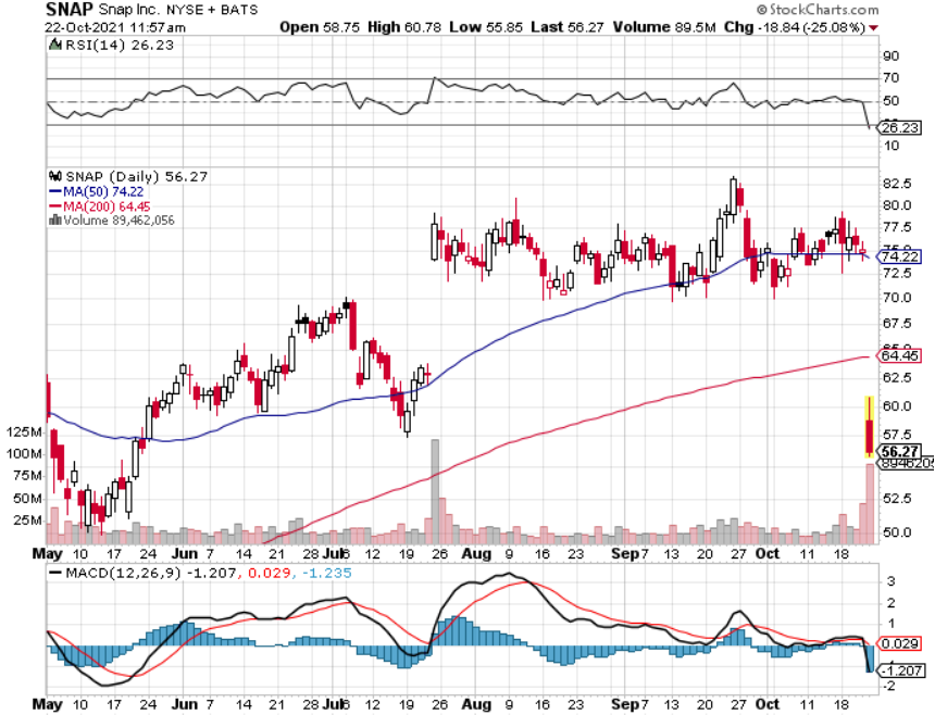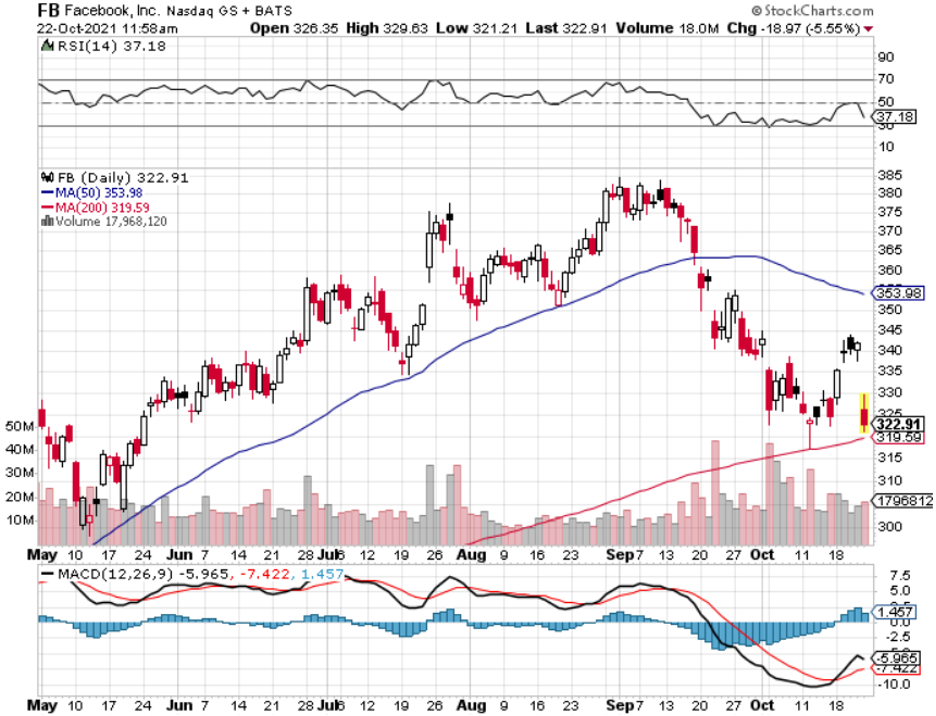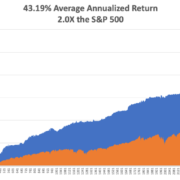So, first the good news — SNAP expanded revenue by 57% year-over-year.
It was only a few years ago that this tech company was the backwater of social media, but it’s done its bit to catch up with the crowd.
SNAP targets the 18–29-year-olds and although not minted, there are pathways for a lifetime of revenue generation from this cohort.
In a rough environment battling Google (GOOGL) and Facebook (FB) and despite these challenges, they crossed $1 billion in quarterly revenue for the first time.
That was the good news and now you might want to cover your ears so put on those earmuffs.
The reason SNAP missed guidance by $3 million was because there have been changes to advertising tracking in Apple’s iOS system.
These ongoing changes to digital advertising were introduced as part of iOS 14.5 and were announced ahead of time, and now that move is started to suppress the bottom line for the social media giants.
SNAP anticipated some degree of business disruption, and unfortunately, their provided measurement solution did not scale as expected.
Basically what’s happening is that it’s more difficult for advertising partners to measure and manage ad campaigns for iOS.
Advertisers are no longer able to understand the impact of their unique campaigns based on things like the time between viewing an ad and taking an action or the time spent viewing an ad.
Real-time campaigns and creative management are hindered by extended reporting delays and advertisers are unable to target advertising based on whether or not people have already installed an app.
Without these business analytics, SNAP’s platform is less attractive because sale conversions are a great deal lower.
This impact was compounded by the ongoing macroeconomic effects of the global pandemic with advertising partners facing a variety of supply chain interruptions and labor shortages.
The ongoing magnitude and duration of these global supply and labor disruptions are inherently unpredictable.
Also, businesses do not have the inventory or operational capacity to support incremental demand.
SNAP expect customers to cut marketing budget given the diminished need to drive incremental demand at a time when supply chains are not able to operate at peak capacity.
This in turn that reduces their short-term appetite to generate additional customer demand through advertising at a time when their businesses are already supply-constrained.
The big question is: how bad will the Apple changes impact SNAP in the future?
SNAP is down 25% in today’s trading and that’s just them.
Facebook is down around 6% and Google is also off 3%.
Apple has signaled that they aren’t willing to accommodate the tracking techniques of the social media companies.
Clearly, investors are worried about the magnitude of the drop in shares, and this does a great deal to kill the momentum in the stock.
This isn’t the end of the world because I would like to point out that these changes happened in June and July, yet SNAP was still able to grow revenue by 57% year over year.
But I will say this will crimp the growth elements in the business model and lower the ceiling.
Growth rates of high 50% could start trending towards the lower 40% and investors hate that.
The company is still quite small — less than $90 billion of market cap.
This is exactly what SNAP didn’t want because comparatively speaking, Google and Facebook will be able to absorb this better with their war chest of capital readying itself to plug in the gaps.
The stock essentially gave back a year of performance in one morning, but I do view this as a buying opportunity and readers who have a long-term view will certainly profit once SNAP work itself through this problem, but it will be closer to a crawl up than big gaps up in prices.





